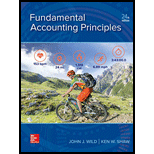
Sub Part-1
Bonds Issuance:
The Bonds issuance by the company is a source of long term financing and is issued at a discount or premium depending the prevailing market rate of interest and stated rate of interest on bonds. When the stated rate of interest is higher than the market rate of interest, then the investors will be ready to invest only in the situation when the bonds are issued at premium. This premium on bonds issue shall be treated as income by deducting the amortized portion from the cash interest paid to arrive at the interest expense of the period.
Straight line Amortization of Premium:
The Straight line amortization of Premium is a technique of writing off the total discount over a period of bonds with an equal amount on each interest period. This equal amount can be computed by dividing the total amount of discount by the number of interest periods over a life of bonds.
The Total interest expenses over the life of bonds.
Sub Part-2
Amortization table:
The amortization table under
The Amortization table has to be computed for the lifetime of bonds.
Sub Part-3
Accounting treatment of interest payment and amortized discount:
The Accounting entry required to be passed at each interest period is debiting the total interest expense as per amortization chart and also, Premium on bonds payable is debited for the amount of premium amortized and credit being made to the cash account for cash interest paid.
The Journal entries for two interest payments.
Want to see the full answer?
Check out a sample textbook solution
Chapter 14 Solutions
Fundamental Accounting Principles
- The Patidar Group manufactures and sells a single product, Product T. Budgeted sales for June are $450,000. Gross Margin is budgeted at 35% of sales dollars. If the net income for June is budgeted at $62,500, the budgeted selling and administrative expenses are?arrow_forwardAccounting MCQ 25arrow_forwardNeedarrow_forward
- Solve this MCQarrow_forwardI am trying to find the accurate solution to this general accounting problem with appropriate explanations.arrow_forwardExplore the concept of accounting flexibility and its impact on the reliability and usefulness of financial information. While adaptability in accounting methods can allow organizations to better reflect their unique circumstances, it may also introduce the risk of selective application or manipulation. Discuss the appropriate balance between standardization and customization in accounting practices.arrow_forward

 AccountingAccountingISBN:9781337272094Author:WARREN, Carl S., Reeve, James M., Duchac, Jonathan E.Publisher:Cengage Learning,
AccountingAccountingISBN:9781337272094Author:WARREN, Carl S., Reeve, James M., Duchac, Jonathan E.Publisher:Cengage Learning, Accounting Information SystemsAccountingISBN:9781337619202Author:Hall, James A.Publisher:Cengage Learning,
Accounting Information SystemsAccountingISBN:9781337619202Author:Hall, James A.Publisher:Cengage Learning, Horngren's Cost Accounting: A Managerial Emphasis...AccountingISBN:9780134475585Author:Srikant M. Datar, Madhav V. RajanPublisher:PEARSON
Horngren's Cost Accounting: A Managerial Emphasis...AccountingISBN:9780134475585Author:Srikant M. Datar, Madhav V. RajanPublisher:PEARSON Intermediate AccountingAccountingISBN:9781259722660Author:J. David Spiceland, Mark W. Nelson, Wayne M ThomasPublisher:McGraw-Hill Education
Intermediate AccountingAccountingISBN:9781259722660Author:J. David Spiceland, Mark W. Nelson, Wayne M ThomasPublisher:McGraw-Hill Education Financial and Managerial AccountingAccountingISBN:9781259726705Author:John J Wild, Ken W. Shaw, Barbara Chiappetta Fundamental Accounting PrinciplesPublisher:McGraw-Hill Education
Financial and Managerial AccountingAccountingISBN:9781259726705Author:John J Wild, Ken W. Shaw, Barbara Chiappetta Fundamental Accounting PrinciplesPublisher:McGraw-Hill Education





